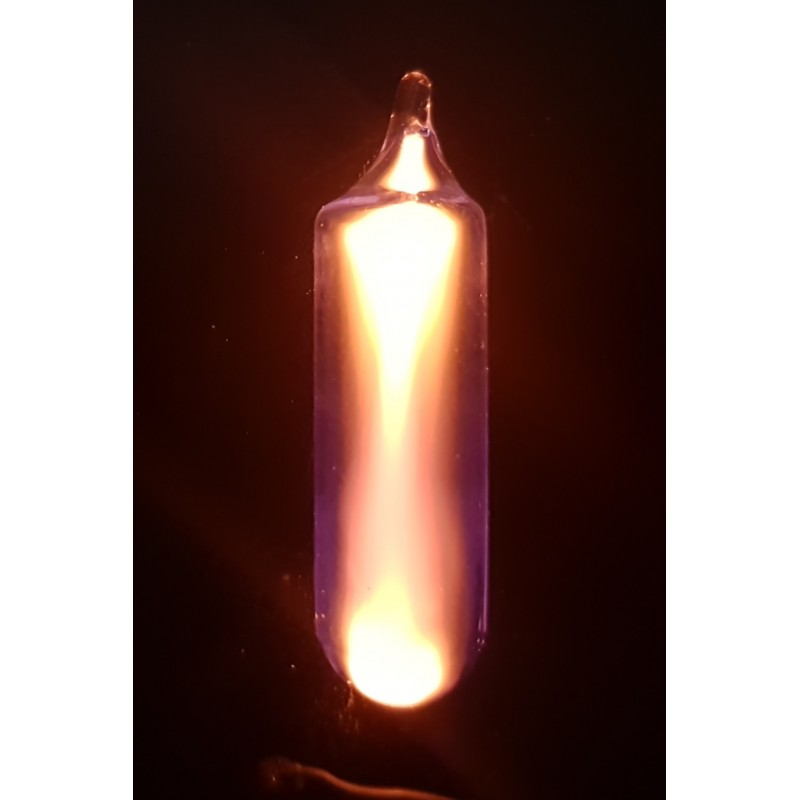





High purity neon in a glass ampoule with ~ 45mm length and 12mm diameter. Purity 99.999%. The ampoule is filled with low pressure and can be excited to glow using an electric field (e.g. a plasma ball) or using a microwave field.
Neon, with the chemical symbol Ne, is a colorless, inert noble gas and belongs to the noble gas group in the periodic table. It was first discovered in 1898 by the British scientists Sir William Ramsay and Morris Travers, who isolated it from liquid air. The name "Neon" is derived from the Greek word "neos," meaning "new."
Although neon is the fifth most abundant element in the universe, it is exceedingly rare on Earth, constituting only about 0.0018% of the Earth's crust. Due to its low reactivity, neon is often used in gas discharge lamps, particularly in neon lights, to produce vibrant, luminous colors.
Exciting applications of neon span across the lighting industry, advertising, and art. Neon lights are employed for vivid signage and artistic designs. In the future, innovative applications could arise in laser and plasma research as well as in space exploration. Neon might also find application in advanced cooling systems and medical technology. Despite its limited availability on Earth, neon remains of interest due to its unique luminescent properties and potential future applications.
Although neon is primarily known for the glowing gas discharge tubes in neon lights, it also forms so-called neon compounds. Normally, noble gases such as neon are considered chemically inert, meaning that they do not form compounds with other elements under normal conditions. However, some neon compounds have been synthesized under extreme conditions, such as those that can be produced in laboratories. One example is the neon hexafluoride ion, which was first produced in 2000 by scientists at the Max Planck Institute for Nuclear Physics in Germany. This rare molecule consists of one neon atom and six fluorine atoms and shows that even noble gases, which are considered extremely inert, can be reactive under extreme conditions. It is important to note that such compounds are usually very unstable and can only exist under special laboratory conditions.